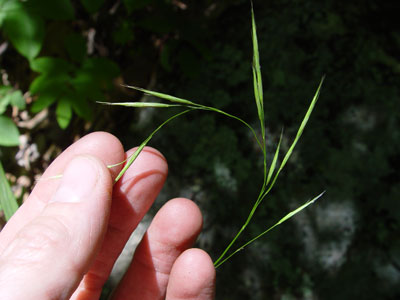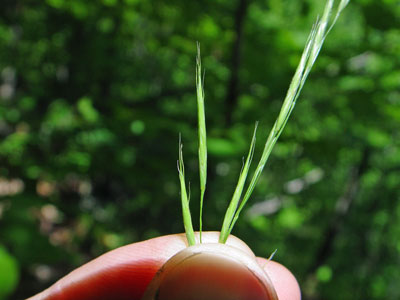DACF Home → Bureaus & Programs → Maine Natural Areas Program → Communities, Plants, and Animals → Rare Plants → Bromus pubescens
Bromus pubescens Muhl. ex Willd.

Hairy Wood Brome-grass
- State Rank: S2
- Global Rank: G5
- State Status: Special Concern
Habitat: Rich moist woods. [ Hardwood to mixed forest (forest, upland); Non-tidal rivershore (non-forested, seasonally wet)]
Range: Florida to Texas, north to Maine, and west to Alberta.
Aids to Identification: This perennial grass is characterized by smooth culms (stems) which grow to 0.6-1.6 m in height, with 4-6 blades (each 15-30 cm long and up to 2 cm wide) on each culm.
To distinguish members of the genus Bromus it is necessary to compare rather technical features. B. pubescens is identified by the following characters: entirely hairy lemmas; first glume is 1-veined; a non-rhizomatous perennial; spikelets shorter than pedicels, and culms with non-overlapping sheaths. Taxonomically confusing.

Ecological characteristics: Very little is known about the ecological characteristics of this species in Maine. It grows in rich woods, often in alluvial communities or riverside banks.
Phenology: Fruits June - August.
Family: Poaceae
Synonyms: Referred to as Bromus purgans L. in Gray's Manual, Eighth Edition (Fernald 1950), and elsewhere as B. kalmii; both names were incorrectly applied.
Known Distribution in Maine: This rare plant has been documented from a total of 11 town(s) in the following county(ies): Aroostook, Kennebec, Oxford, Somerset, York.
Reason(s) for rarity: At northern limit of range.
Conservation considerations: Unknown.